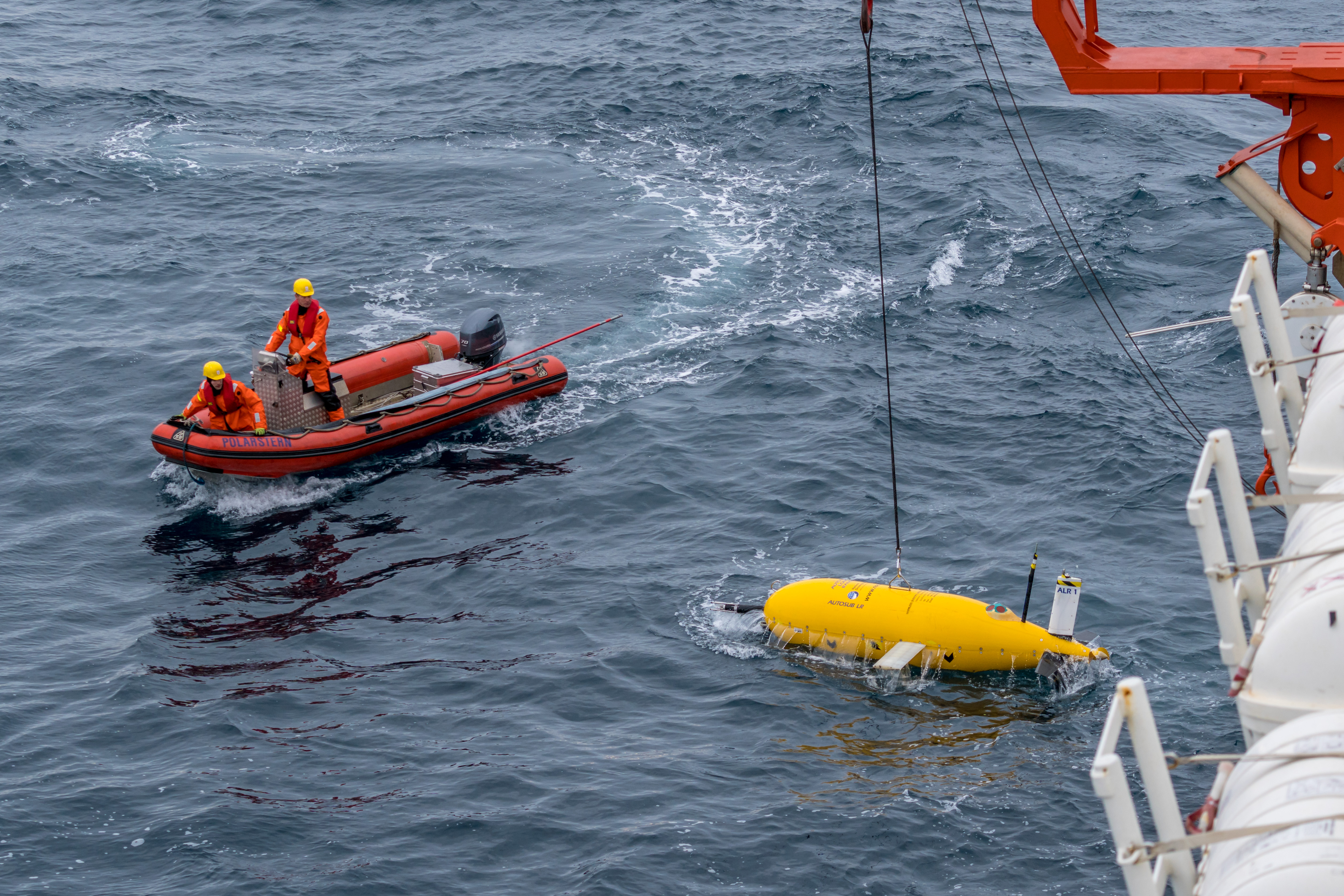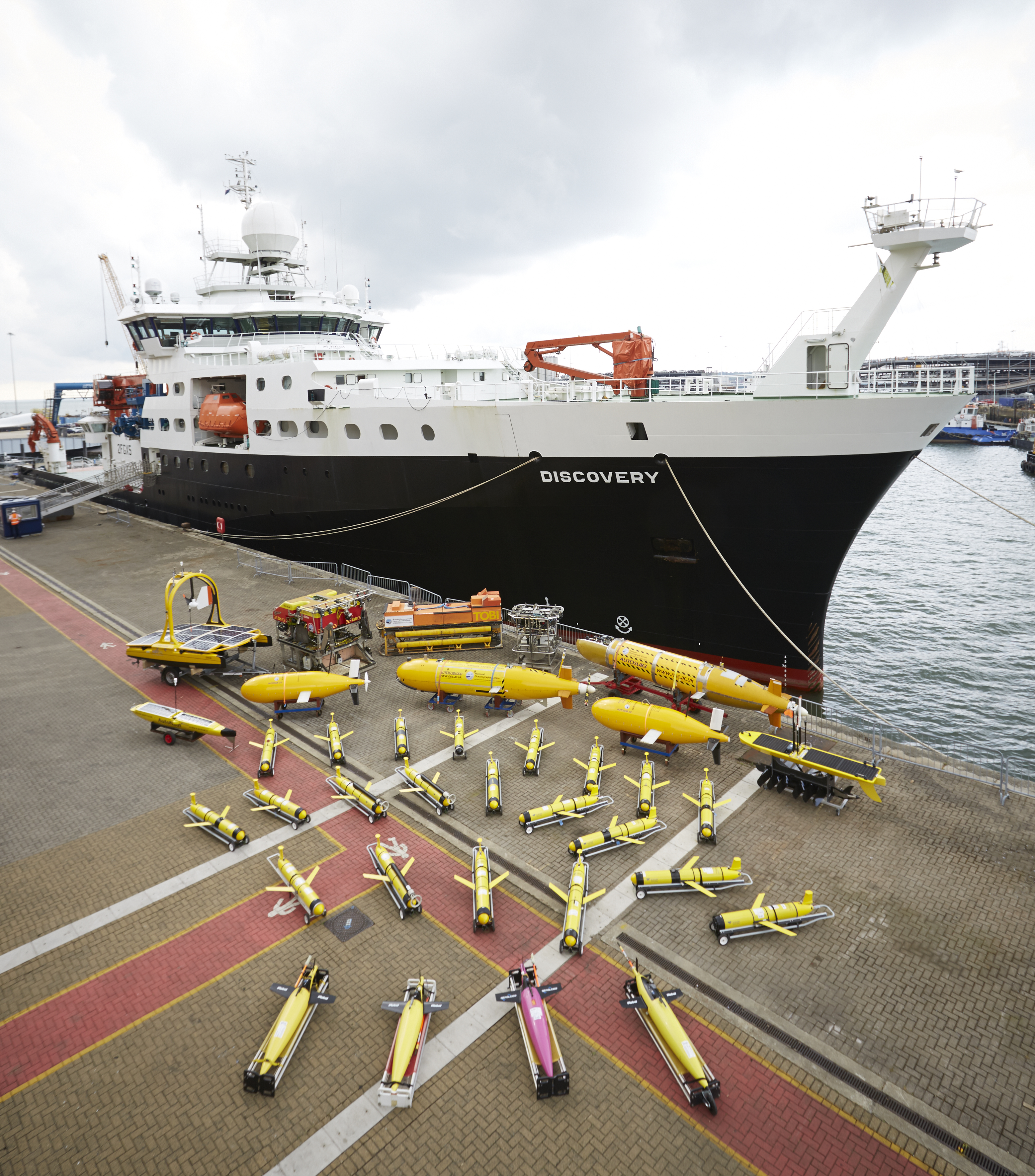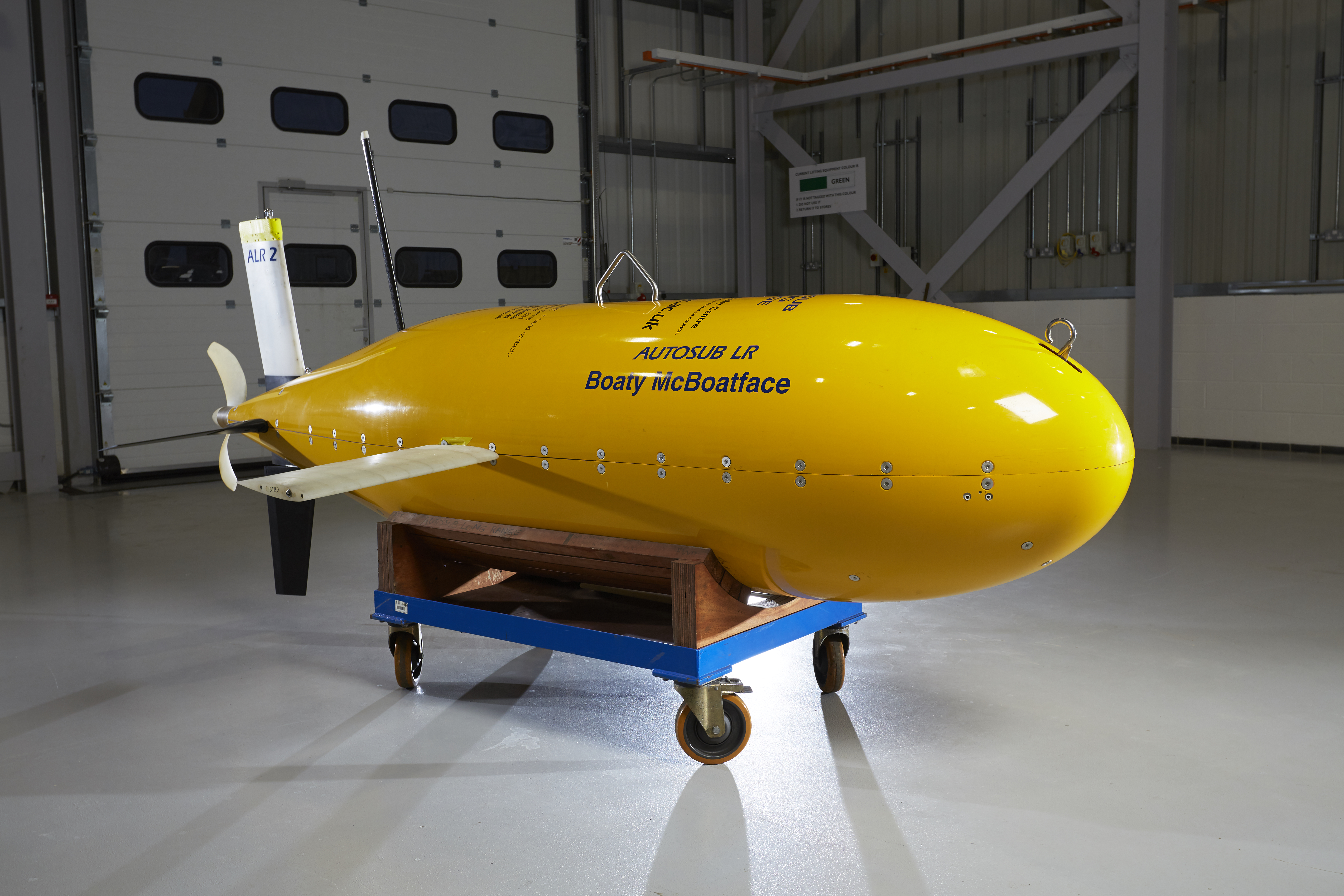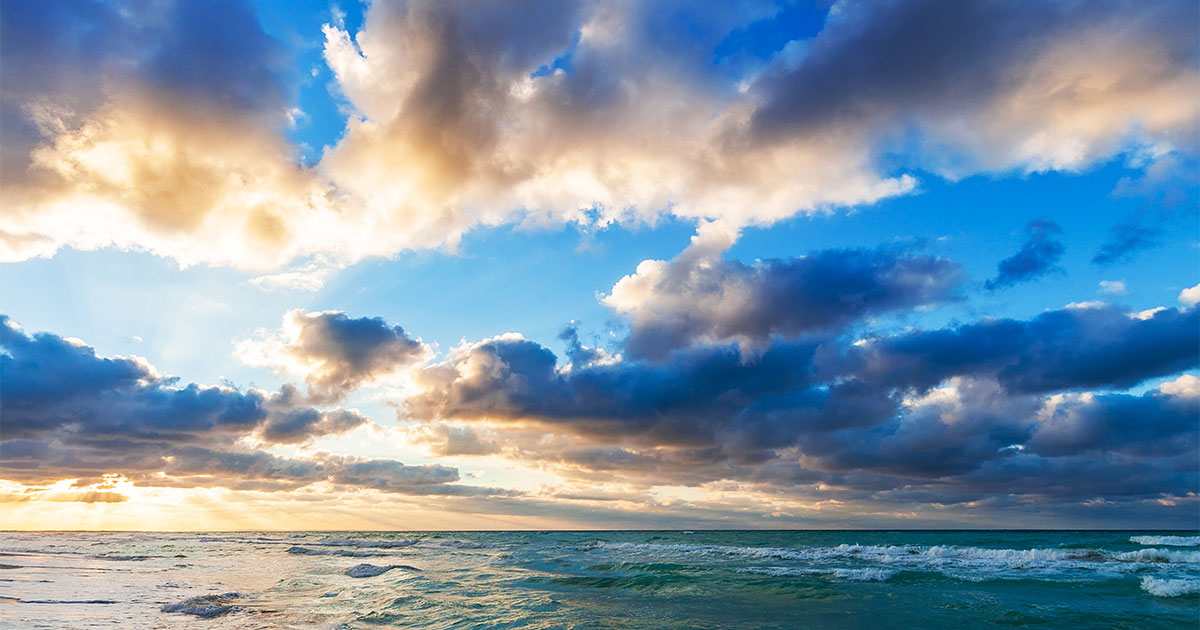2022 marks 150 years since the HMS Challenger expedition (1872-1876)—a scientific program widely considered to be the world’s first oceanographic research expedition, laying the foundations of modern oceanography. Arguably, the way we collect oceanographic data hasn’t changed much over the last one and a half centuries. Scientists board a ship, go out to the ocean, throw measuring instruments into the water and retrieve samples. One of the most significant developments in recent years has been in remote sensing from satellites and autonomous platforms. These relatively new tools have given birth to the concepts of digitalizing the ocean and ‘digital twins’, offering scientists an opportunity to reimagine how they collect, use and share oceanographic data.
Leigh Storey, Associate Director at the NOC’s National Marine Facilities, said: "Typically speaking, once a scientist gets a grant to cover research costs, they get privileged access to the data for usually 1 to 2 years. But data from satellites or floats increasingly gives near-instant access to any scientist using global data portals such as Copernicus. The growing use of autonomous platforms supporting 'observing networks' presents an opportunity to move that model on another step.”
There are two major implications for this new approach. First, the access to ocean data and the digital twin concept (which allows you to digitally alter variables to observe potential changes in the ocean) means whether you are an economist, physical oceanographer, or historian, you can access and ‘play with’ the data. The perhaps more important implication is around equality. If all you need to do is to access data through an online portal, it suddenly becomes accessible to scientists outside of the Northern Hemisphere – where around 99 percent of science is published—enabling an era of truly international research.

(Image credit: National Oceanography Centre)
There are other benefits to changing the way we conduct science. Scientists are limited by how long they can stay out at sea and collect data, often needing to extrapolate for the rest of the year. If instruments can be left in the ocean year-round, we can collect more data points resulting in more accurate ocean modeling and weather forecasting. A recent example is how the US’s National Oceanic and Atmospheric Administration (NOAA) are achieving ground-breaking hurricane datasets in the Tropical Atlantic with the help of Saildrones—gathering never-seen-before data from inside Hurricane Sam in 2021. This data will go a long way to improving hurricane forecasts and have a direct impact on coastal communities.
There is also the need to reduce our carbon footprint.
The NOC has one of the largest autonomous fleets in Europe and has been pioneering the development and use of marine autonomous systems in the UK for the last 20 years. With more platforms joining their fleet of 50-plus vessels, they sought to uncover what operating model scientists might want and need using autonomous platforms. And figure out if the NOC can deliver it.

(Image credit: National Oceanography Centre)
Then in 2020, the UK Research and Innovation (UKRI) published an environmental sustainability strategy announcing their ambition for the UK’s science community to become net zero by 2040.
“It’s brilliant that the UKRI set that challenge. But where are the big emitters in the UKRI footprint? It’s the UK’s three research vessels by some way. So, those two things effectively came together: we need to meet this target and work out what we do with our research vessels, and we need to plot a path to how we integrate this new technology and continue to enhance the science by improving what data we can capture,” said Storey.
Transitioning to Net-Zero
The NOC’s Net Zero Oceanographic Capability Strategy report, published in January 2022, identified several important changes that the U.K. (and the rest of the world) would need to make by 2025 to stay on pace for zero emissions. This includes:
- Reducing the need for scientists to work in ship-based laboratories by making an immediate and significant investment in developing scientific sensors that can be fitted to autonomous platforms and floats.
- Investing in the development and operation of autonomous platforms that, operating in swarms and as part of a wider observing network, can start to replace capability currently available only on research ships.
- Linking the observing network to data portals that can be accessed by multiple users; and
- Taking advantage of commercially developed technology that enables ‘green’ research ships, i.e., using green Hydrogen or Ammonia.
Since the lifespan of a ship is around 25 to 30 years, meeting this goal would mean any new ships being built today should have a clean energy source such as hydrogen. But the global infrastructure needed to scale-up clean energy is still lacking in the maritime sector. And then there is the challenge of space onboard the ship itself.
“Using the RRS Discovery as an example, the storage of diesel fuel is about 13 percent of the ship’s volume. If you replace this with hydrogen fuel cells, it goes up to around 40 percent, so you must find 27 percent extra volume without compromising endurance or functionality. The way you find that space is to increase the capability of autonomous platforms and onshore some of the roles traditionally carried out at sea,” said Storey.
While the maritime sector is solving challenges around clean fuel, Storey believes the oceanographic sector should develop and scale-up autonomous fleets. Using this approach, by the time we reach the UKRI’s 2040 target, research vessels can be retrofitted or built with clean energy and be surrounded by an ecosystem of autonomy without impacting the science.
Storey adds, “That is the best-case scenario. The worse-case scenario is the UK losing direct access to multi-role research vessels because we haven't reduced our carbon footprint, leaving us with only a few gliders to share nationally. That will have dramatic consequences on the science community. The challenge now is how to develop the technology while running the ships, which is expensive. Can the UKRI afford to meet those initial costs over the next 15-18 years?”
Collecting oceanographic data using autonomous fleets isn’t necessarily cheaper. And it’s certainly not easier. There are still significant development costs alongside the capital costs of scaling up this new technology. A fleet of around 300 gliders requires infrastructure and technical support staff to operate and maintain the platforms. And, in the end, it costs almost the same as operating and maintaining a large research vessel (if you take into consideration the depreciation cost of the ship). Over time, the price of autonomy will eventually reduce and their unique capabilities will open up new areas of exploration.
Building the Autonomous Capacity
The NOC has 50-plus autonomous platforms in its fleet. But, according to Storey, they need to expand this to 500 (alongside developing new sensor payloads) to have the impact and data-collection capacity the science community needs. Other nations, including the US, are also growing their fleets and starting to experiment with how best to operate large numbers of platforms together during one mission
There are still many issues that engineers are trying to resolve to make remote, long-term data collection missions and ‘swarming’ capabilities a reality. These include preventing biofouling on sensors and how to dock and recharge platforms while they are still in the water.
“There have been some nice projects with an unmanned surface vessel (USV) and a glider. If you can redock the glider into the USV, you can upload the data, potentially clean the sensors and send it off again with recharged batteries. That will be of interest to several industries. Then there are the issues around data ecosystems - the ‘C3’ Comms, Command and Control components. How do you control these assets and get the data to the users in a way they want to use it, efficiently and cheaply? Ocean Infinity is one of many organizations working in this area of robotics. Once you unlock those challenges then that in itself will be transformational in terms of our remote sensing capabilities.”
Autonomous platforms come in all sizes, from the 1-meter-long ecoSub which you can transport in a rucksack to Boeing’s 51-foot-long Echo Voyager. Operating large diverse fleets in a cohesive manner is not easy, but it’s a challenge many in the industry are working to resolve.

(Image credit: National Oceanography Centre)
Once the technologies are working harmoniously together in the water, how can scientists’ use the systems to their benefit? Storey suggests the answer could be adopting a similar model to that of the Hubble Space Telescope. A scientist can ‘hire’ fleets for a few hours to collect data, have the ability to turn certain sensors on/off as needed, then pass the controls along to the next scientist to use. But if we are to build a net zero oceanographic sector, there needs to be a fundamental shift in how we conduct science on an international scale.
Adopting a New Net-Zero Approach
Storey said, “The biggest challenge is that it will require change. Not just in our industry but every industry. Almost everyone on the planet is up for reducing our impact on the climate but when it comes to changing our own behaviors – which isn’t always convenient – we are usually less keen.”
There needs to be a major overhaul to a firmly ingrained way of doing things in science. The first thing on Storey’s to-do list is to change the way we use our research vessels. “Countries are often determined to conduct national science using their own vessels, even if it means traveling 3,000 miles when there is already a research vessel from another country there.”
Using the Marine Facilities Planning system (MFP), it is now possible for scientists to see the location of almost every research vessel on the planet. In an ideal scenario, a UK-based Principal Investigator I can reach out to the scientists onboard an Iceland-owed vessel that happens to be in the location of interest and ask them to take some measurements. This new approach to planning will require a systematic change to funding and in how scientists work together as a global community.
Are scientists going to have to compromise? Storey thinks so, but there are also opportunities for accessing novel data sets that wouldn’t be available under the current ecosystem.
“One of the things we don’t currently do is estimate our footprint upfront when we are planning research expeditions—it’s just not something we automatically consider. When this becomes part of the process, it becomes part of the estimate and planning cost and that drives some of the behavioral changes in how, where and when we choose to conduct the science.”
Storey adds, “Some may argue that the data collected and the good that comes from that research offset the carbon impact of collecting the data. No one should take away from the report ‘stop doing science’. But if we as a scientific body are telling society to change their behavior otherwise the climate crisis will get worse, that is undermined if we can’t demonstrate we are doing it ourselves.”
The report shows that it is possible for the oceanographic sector to become net zero. It is expensive and requires changes across the entire ecosystem. But it is possible. Fortunately, one thing that hasn’t changed over the last 150 years is scientists’ ability to reimagine and create novel experiments when the need is there. Now it’s time to reimagine our approach to how we conduct science.
This feature appeared in Environment, Coastal & Offshore (ECO) Magazine's 2022 Spring edition, to read more access the magazine here.





